Beyond the Sky and the Earth: A Journey into Bhutan is currently taught on the Edexcel GCSE/IGCSE English Language Paper 1 curriculum. It is one of the 10 non-fiction texts which students answer on in Section A. This guide to teaching the extract includes activity ideas and teaching tips. The Beyond the Sky and the Earth: A Journey into Bhutan resources pack contains editable Google Slides, detailed annotations, practice exam questions with a mark scheme and quiz questions with an answer key. All resources are available as downloadable PDFs and as editable Google documents so that you can alter them to suit your students.
Beyond the Sky and the Earth: A journey into Bhutan is Jamie Zeppa’s personal account of travelling to Bhutan to take up a teaching role there. The Edexcel IGCSE extract is the section whereby the writer describes her first experiences in Bhutan. As the reader, we are privy to her trepidation, cultural shock, wonder, awe and respect for this completely new place. Zeppa writes in present tense, increasing the intensity and first-hand experience for the reader.
Zeppa experiences a range of reactions to the setting and people she encounters; but how can we support students to capture that in their exam essays? How can we break it down to consider not only the message from a critical stance, but how Jamie Zeppa portrays the complex history and culture of Bhutan?
Beyond the Sky and the Earth: A Journey into Bhutan IGCSE Resources
As a GCSE examiner of more than a decade, I aim to create resources to help students improve their exam scores. So, I’ve created a scheme of work for busy teachers to take you step-by-step through the text from the angle of exam performance. It contains everything from an engaging, thought-provoking starter, to language techniques, to analysing and annotating the text. There are also practice Edexcel GCSE style questions on the text. This includes a comparison to another GCSE text, ‘Explorers or Boys Messing About? Either way, the taxpayer gets the rescue bill’.
This resource contains editable Google slides, quizzes with answer keys, exam questions, a model paragraph and close textual annotations of the whole GCSE extract. Furthermore, all activities are ready to download and print in PDF form or there are links for you to personalise them if you wish.
Edexcel IGCSE English Language Exam Paper 1
The 2 hour 15 minutes Edexcel IGCSE English Language Paper 1 exam is split into Section A and Section B. Section A is the reading assessment and candidates are presented with one of the 10 non-fiction Anthology texts and one thematically linked unseen text. The texts are between 1.5 and 2.5 pages long. They have 5 questions to answer in Section A:
- A 2 -mark retrieval question. The skill being assessed in this question is lifting and copying two brief and relevant quotes from the unseen text.
- A 4-mark summary question. Candidates are asked to paraphrase a certain event, character or theme from the unseen text.
- A 5-mark ‘SQUID’ question (it’s an acronym not a slimy sea creature!). Students identify five distinct details from the unseen text and use quotations to support their points.
- A 12-mark extended analytical response on the seen text.
- A 22-mark comparative essay, usually based on the writers’ perspectives, experiences or feelings.
Section B is a writing assessment. Candidates choose between two options, which are normally loosely based on the Section A texts. The text types include a letter, article, speech or leaflet. Both Section A and Section B are equally weighted, worth 45 marks each.
A Journey into Bhutan IGCSE Starter Activity
To start teaching this extract, I introduce students to Bhutan through images. The text contains detailed description of the landscape of Bhutan. To enable students to visualise this, I provide images related to the text.
Next, I ask them to write some words, phrases and notes about the images. If it’s helpful, they can have a quick discussion with a partner or others on their table. When eliciting feedback, I encourage students to describe specific details, and explain whether it is somewhere they would like to visit.
In summary, this activity helps give a tangible perception of Bhutan, giving students a framework to approach and understand the extract. The Beyond the Sky and the Earth: A Journey into Bhutan resources pack includes these activities as a handout and on the Google slides.
Beyond the Sky and the Earth: A Journey into Bhutan Language and Structure Techniques
Before diving into the text, I quickly review key language techniques in the extract so that they are fresh in students’ minds as they read. This Beyond the Sky and the Earth: A Journey into Bhutan resources pack includes a matching activity as a PDF worksheet and on the Google slides. Students match the definition and technique, which they can either copy, cut and paste or simply number. As an extension, students can write their own examples of the techniques. This is also a useful revision tool for Beyond the Sky and the Earth: A Journey into Bhutan and any of the other texts assessed at GCSE.
Beyond the Sky and the Earth: A Journey into Bhutan IGCSE Annotations
Prior to close textual analysis, I often ask students to do an initial reading with two different coloured highlighters. They highlight language which portrays a negative view of Bhutan and the writer’s experience in one colour and language depicting a positive experience and perception in another colour. It is a fairly straightforward extract for students to understand on a surface level. A young woman takes a teaching position in Bhutan and describes her first impressions of the landscape, people and culture. The more challenging skill comes in unpacking how Zeppa’s descriptions reveal a range of emotions, feelings and experiences.
When it comes to closely analysing the text of the extract, there are a few ways of approaching the activity. You can read and annotate together with students completing the annotations in real time. Alternatively, you can split students into groups and ask each group to focus on a certain paragraph before feeding back to the class. Or you could read and discuss, then ask students to complete the annotations for homework.
There are many ways of approaching close textual analysis. I find that varying the method for different texts keeps students interested through the unit. This Beyond the Sky and the Earth: A Journey into Bhutan resources pack contains detailed line-by-line annotations for you to share with students.
Beyond the Sky and the Earth: A Journey into Bhutan IGCSE Quiz Questions and Answer Key
After analysing the text, I do a quick assessment for learning quiz with students to assess their understanding of the language and structure of the text. Then, I introduce exam practice questions. Quiz questions for a straightforward low stakes true and false quiz with answers are available on the slides and in PDF form with this resource. This can be done as a whole class activity on the interactive whiteboard. Or, you could hand out the worksheet to students to do in pairs or individually, depending on your time and the nature of your class.
Edexcel IGCSE English Language Exam Questions
Questions 1, 2 and 3 on the Edexcel IGCSE English Language Paper 1 exam test students’ understanding of the unseen text. However, question 4 assesses analysis and evaluation of the previously studied anthology text. When you teach the 10 non-fiction texts, it’s useful to focus on one or two of the questions per text. That way, you can teach the structure and rubric for each of the questions and help students to plan and write quality responses. You have time for self and peer assessment as well as model answers. Over the span of studying all 10 texts, students will cover all question types from the language exam.
Edexcel Beyond the Sky and the Earth: A Journey into Bhutan IGCSE Past Paper Questions
In this Beyond the Sky and the Earth: A Journey into Bhutan IGCSE resources pack, there is a prompt in the style of each of the English Language Paper 1 reading questions. For the 2-mark question 1 example, explain how students gain full marks, ask them to answer the question available on the slides, then self or peer assess straight away. That way, they get immediate feedback and can achieve a low stakes question before moving on to the more challenging 12-mark question 4 and 22-mark question 5. All the notes, prompt and mark scheme are available on the Google Slides and as a worksheet.
Also, there is a practice question 2 in the resource pack. Question 2 involves students summarising part of the unseen text in their own words. However, in order to get to know Beyond the Sky and the Earth: A Journey into Bhutan well and get used to exam-style questions, they can answer on the studied text. There is a mark scheme available, and I find that students can self-or-peer assess this question without problems. Ensure students use their own words and write 4 clear and distinct points to gain full marks for this question.
Furthermore, I have included question 3 practice in the resource pack. Question 3 is worth 5 marks and involves writing concise points and supporting with brief quotations. It does not require students to evaluate or analyse in detail. The examiner will be looking for 5 clear, distinct and relevant points which answer the question. The acronym I use for question 5 is ‘SQUID’, standing for ‘state your point’, use a ‘quotation’, make an ‘inference’ and be ‘direct’. Everything you need to teach this question and enable students to practice is included in the resource pack.
A Journey into Bhutan Analysis
As well as questions 1-3, I have included a sample question 4 for this text. Firstly, take students through the rubric so that they familiarise themselves with how the response is awarded. Then, you can take students through the example PETER paragraph (point, evidence, technique, explain, refer). I provide prompts so that they can organise their ideas before they attempt to answer the extended essay. This way, there are scaffolds in place to support students to produce high quality responses.
After the class has written the answer under timed conditions, ask them to self or peer assess their responses against the rubric. You may want to mark their work too. In order for them to see how to develop an essay, I have included a 5/12 example response in this resource pack. It’s useful to ask students to mark the example essay, then improve it. It also provides an opportunity for you to model developing an answer. Students will then hone and develop the skill of improving their own responses to bridge the gap between where they are and what is required to achieve full marks.
You may want to ask them to ensure multiple relevant quotations support a range of clear points, subject terminology is identified and discussed, and arguments are developed. There are examiner notes included under the Google Slides.
IGCSE English Language Mark Scheme
For this text, I also introduce students to Question 5 on the English Language Paper 1 – the 22-mark comparative essay. In the exam, students compare the studied set text to an unseen text, which is usually thematically linked to the text studied in class. If you are teaching all 10 texts and have a limited time, you can ask students to compare to one of the set texts before you study it in detail. I find that ‘Explorers or Boys Messing About? Either way, the taxpayer gets the rescue bill’ compares well with ‘Beyond the Sky and the Earth: A Journey into Bhutan’. Although their subjects and viewpoints contrast, they both have travel and exploration as a central theme.
I first give students the question of focus. Before asking them to answer it, I go through the rubric. You could ask students to highlight key words or identify skills required to achieve top marks for this question. Then, ask students to complete a comparison table after simply reading the ‘Explorers or Boys Messing About? Either way, the taxpayer gets the rescue bill’ text (not studying it in detail yet to mimic the exam). They make notes identifying similarities and differences between the texts. It’s useful for students to do a brief condensed version of this process in the exam. I have included an editable template with key comparisons in the scheme of work as well as a completed teacher version.
Beyond the Sky and the Earth: A Journey into Bhutan IGCSE Model Essay
Once they have done the notes in pairs or independently, take feedback. Students could complete this digitally then combine notes on a shared document or platform if your situation enables digital interaction between students (sharing a document on Teams for example). Now students have generated ideas and selected relevant quotes to write in their comparative essay. I share an example of how to construct an effective comparative paragraph. As an examiner, I see many superficial and unorganised comparisons, which reduce students’ marks. Teaching a paragraph formula can help students quickly and effectively construct cohesive essays.
A big part of comparative writing is connecting ideas. I have included a quick connective activity to compile a variety of comparison and contrast connectives. This way, students have a range of ‘signposts’ for their ideas available to them in their ‘exam toolkits’. When that quick activity is done (answers included in the resource pack), students can actually write their answers. Giving them a framework and collective idea generation enables them to write higher quality answers straight away.
Edexcel GCSE English Language Transactional Writing Practice
There are also a couple of creative activities included in this resource. Time-permitting, you could use it as a class activity if you feel that students aren’t connecting with the text. Alternatively, it could be set as a homework assignment or an extension activity to challenge students to broaden their perceptions of the text. This can help develop skills required for Section B of Paper 1 (Transactional Writing) and Section B of Paper 2 (Imaginative Writing).
IGCSE Lesson Activities, Resources and Revision
To sum up, some of the best techniques for teaching the 10 non-fiction texts and creating great revision resources for students include:
- Hook students with an intriguing starter activity
- Use alternative methods to closely analyse and annotate the text
- Quiz students for quick AFL to assess whether they are engaging with the text
- Practise either questions 1-3, question 4 or question 5 from the Language paper
- Study model answers, including examples of typical mistakes students make in the exam responses
- Offer an optional creative activity as homework or an extension to challenge students’ perceptions of the text
Good luck teaching Beyond the Sky and the Earth: A Journey into Bhutan – it’s both appreciative and condescending so makes for an interesting read. Comment below if you can add any useful teaching and learning techniques for this text.
If you enjoyed this article about teaching ‘Beyond the Sky and the Earth: A Journey into Bhutan’, you might also find value in my Edexcel IGCSE Paper 2 guides and resources for ‘Out, out-‘ and ‘Disabled’. There are also Edexcel IGCSE English Language Paper 1 guides and schemes of work for many of the set texts, including H is for Hawk and Between a Rock and a Hard Place. Thank you for reading and follow my store for more as resources are constantly being added.

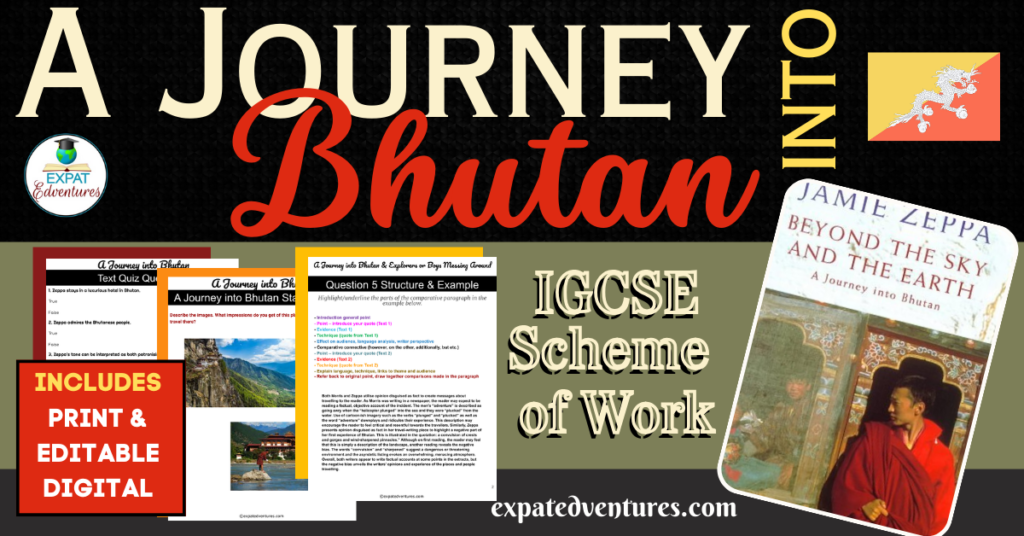
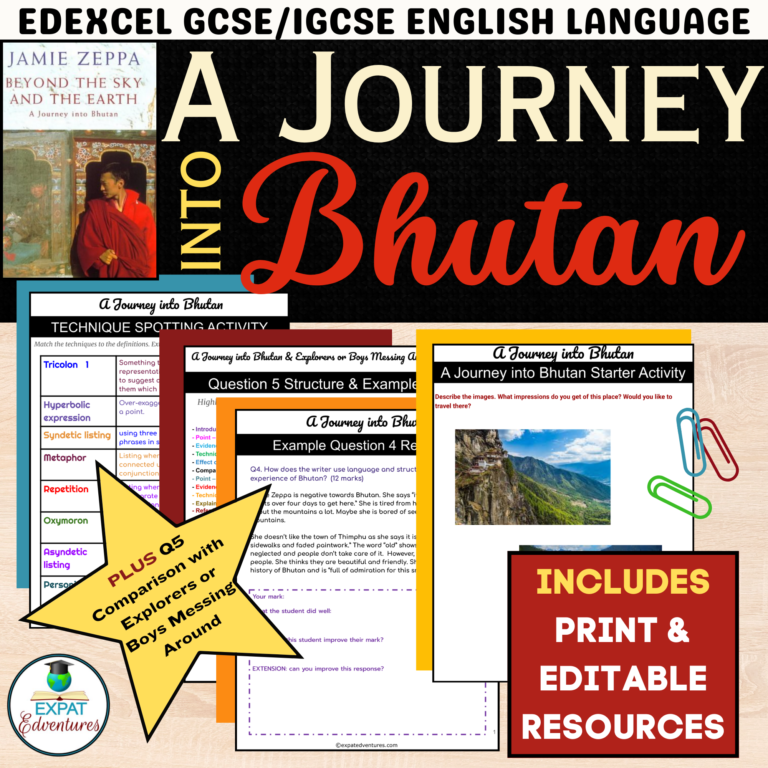
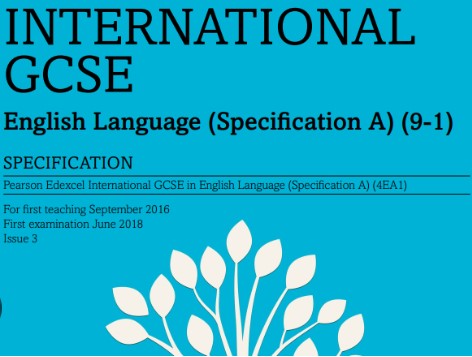
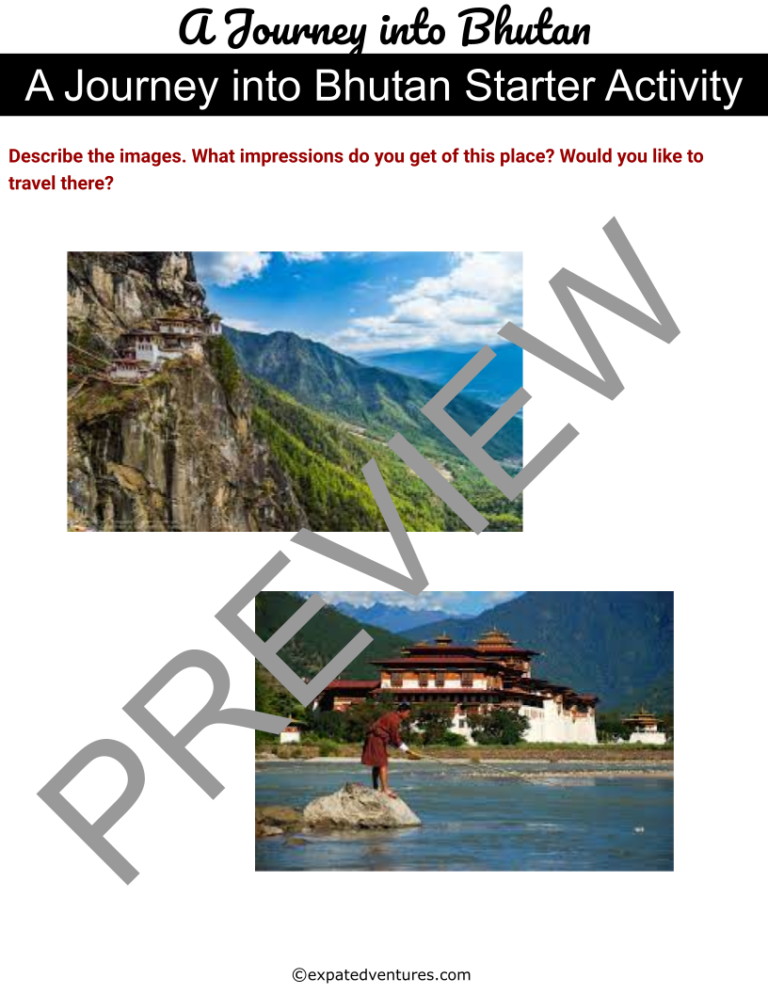
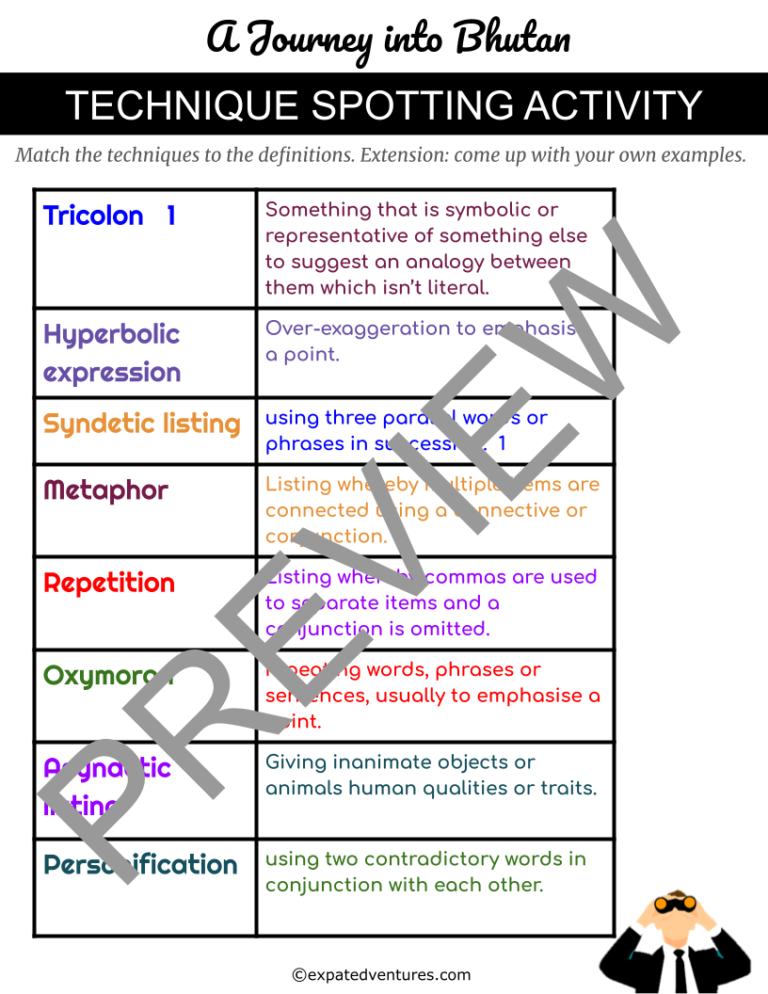
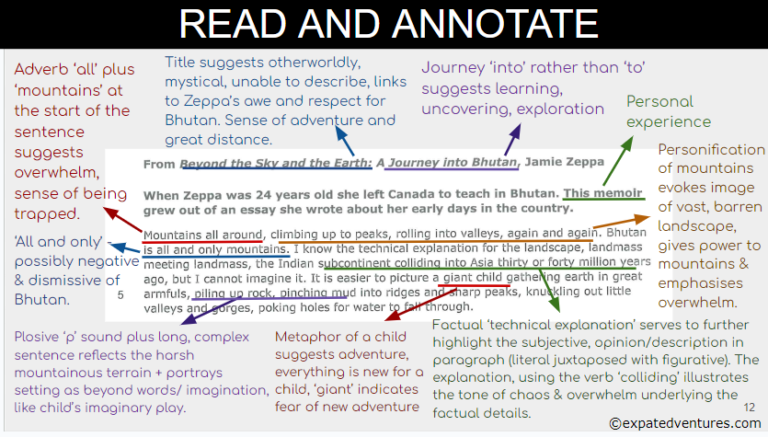

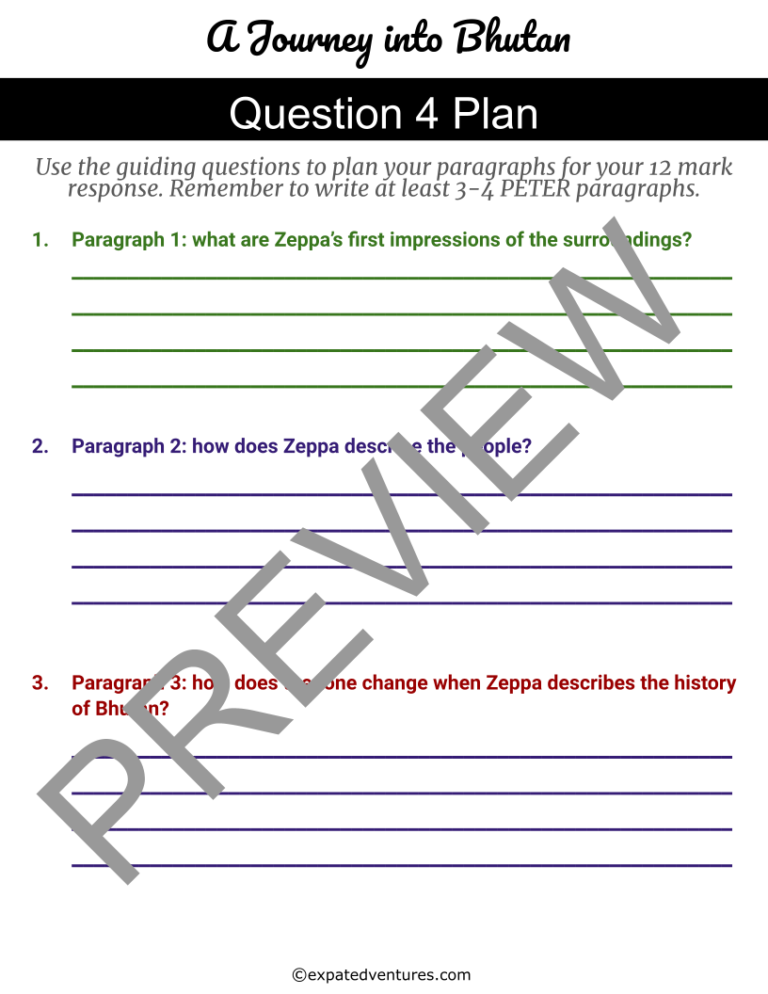
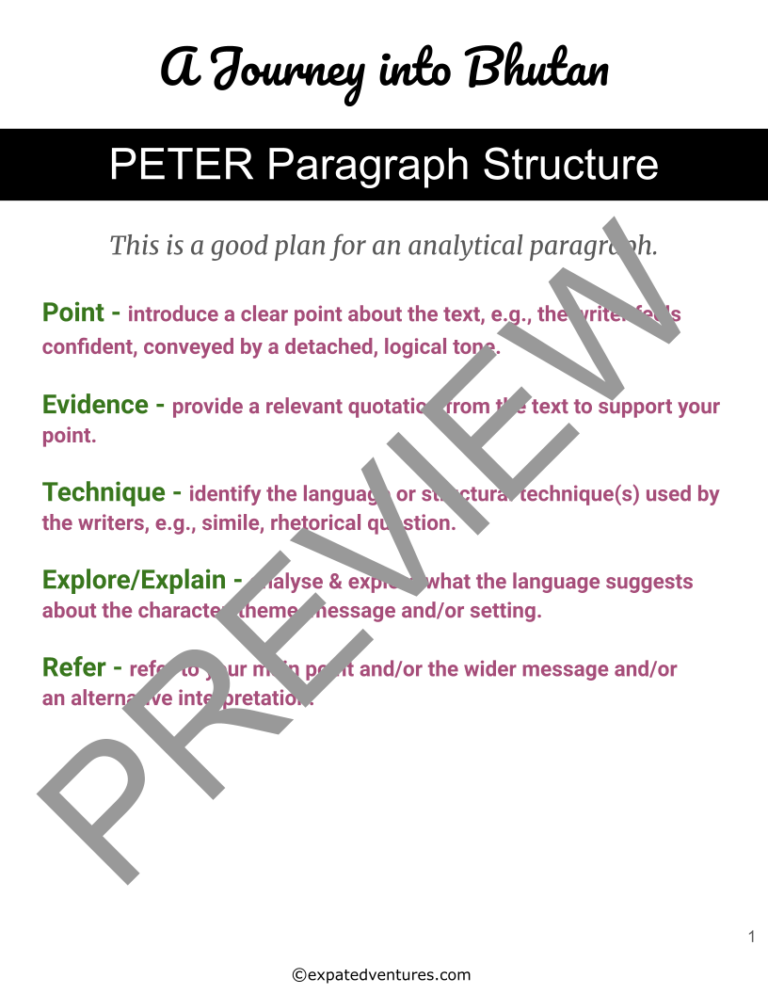
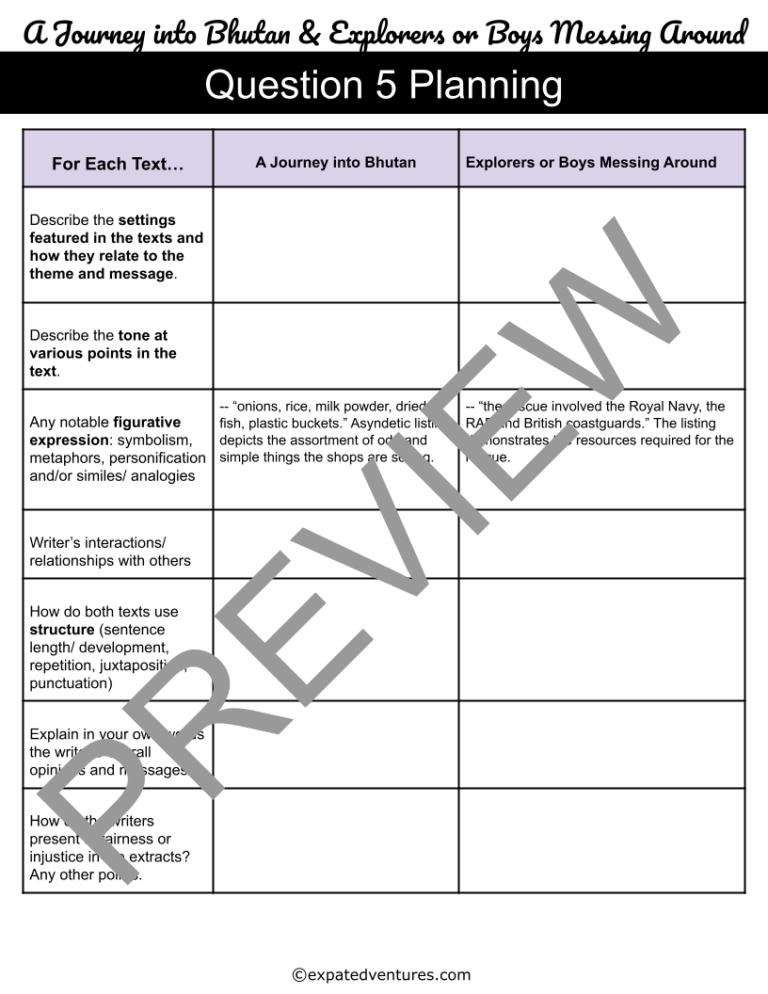
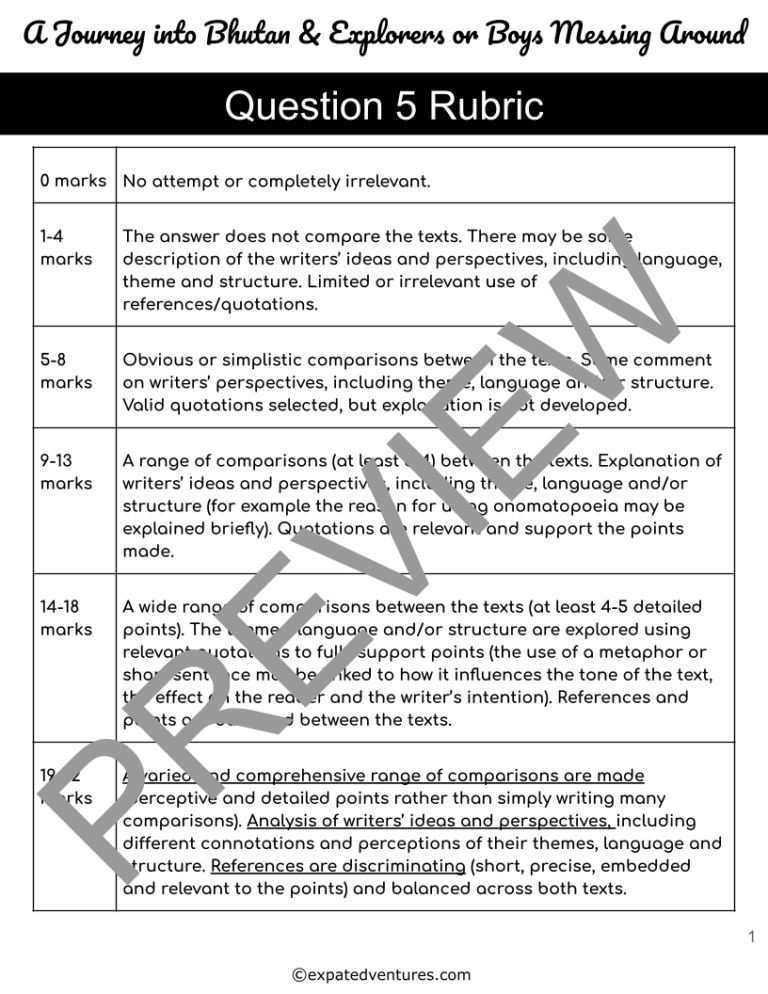
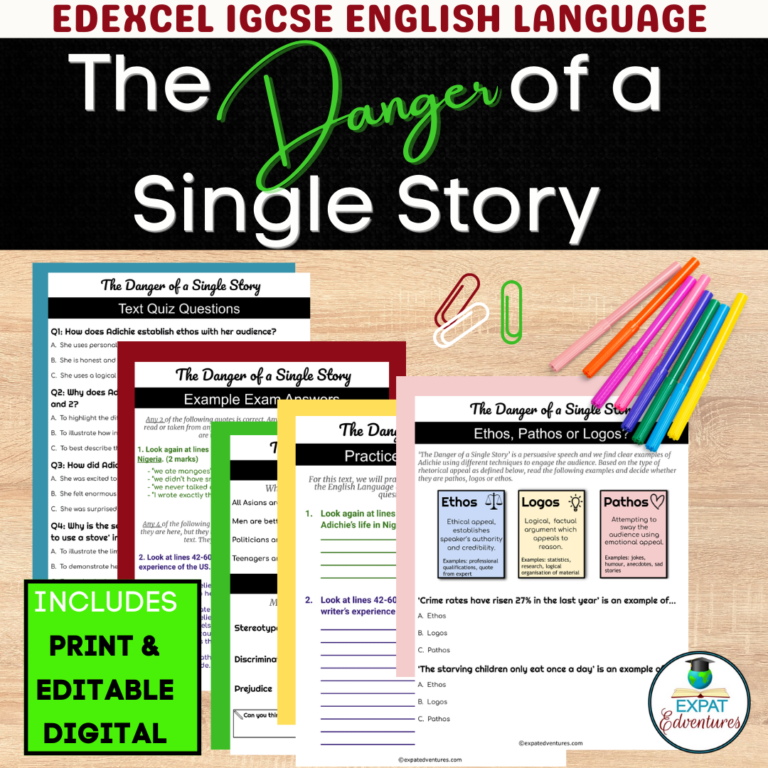
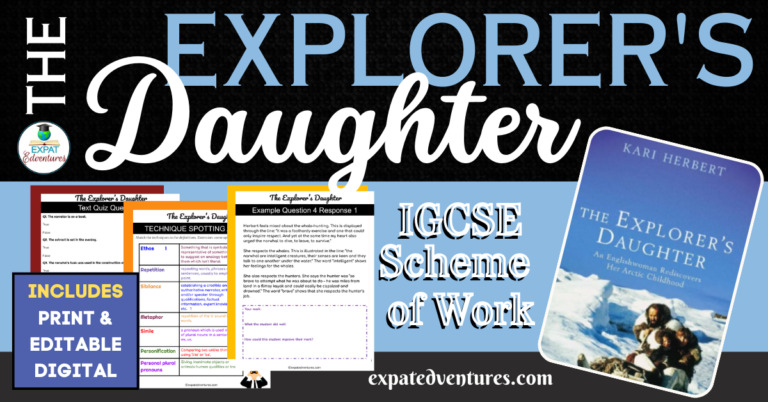
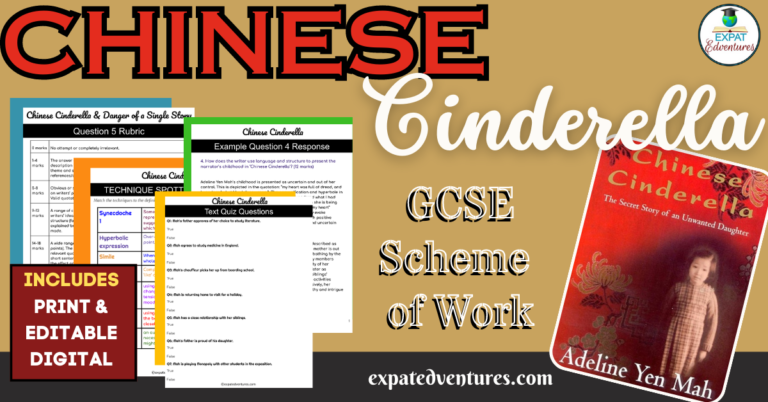

Pingback: Explorers or Boys Messing About Resources - Expat Edventures